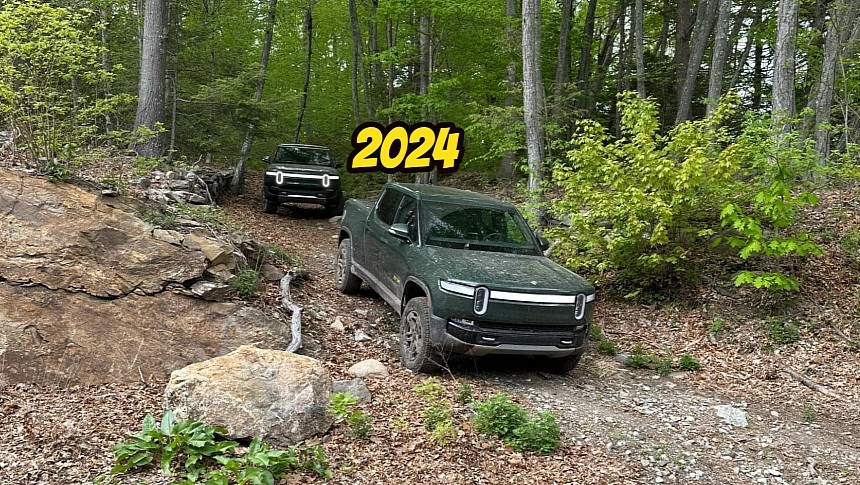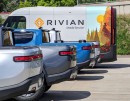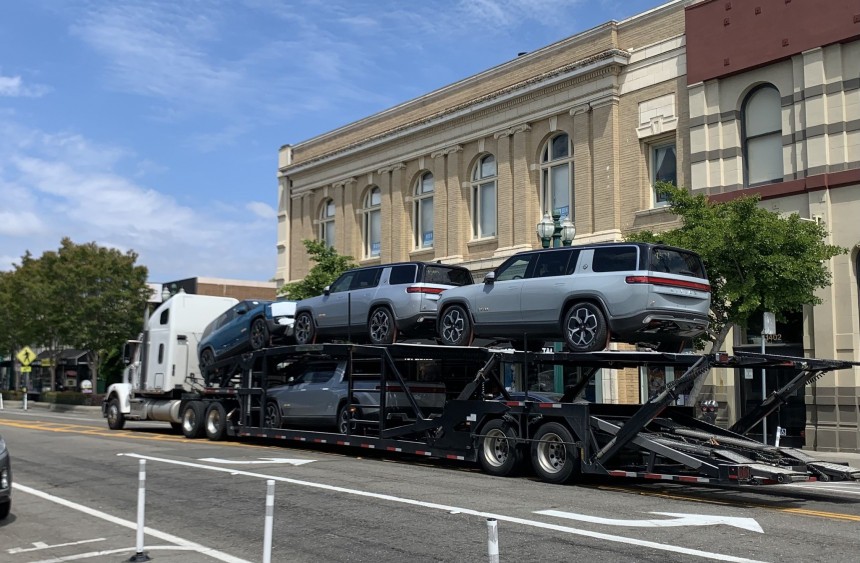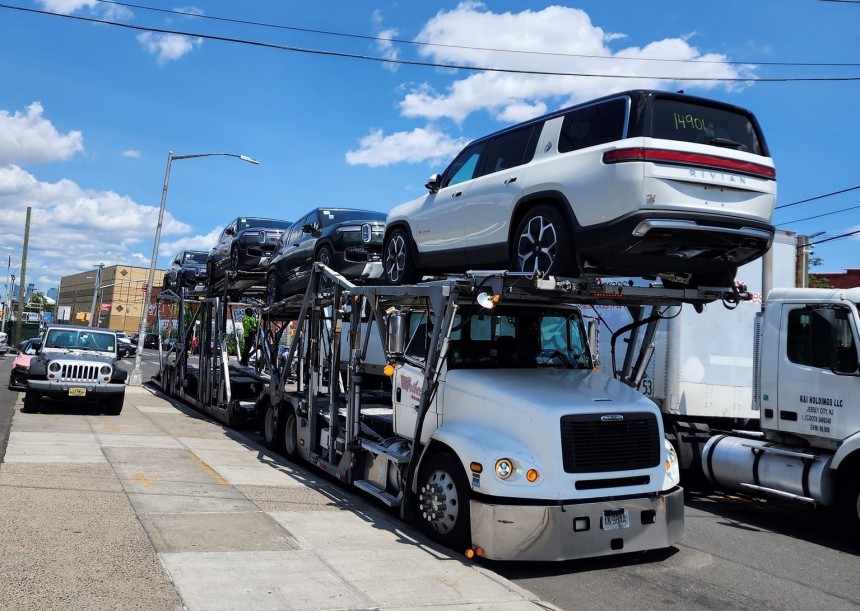Rivian certainly has some catching up to do if it ever wants to get its stock back to December 2021 levels. It has lost over 80% of its worth in a little under two years and keeps burning through the big pile of cash that, fortunately, is still quite large. But things are certainly looking up for the promising EV brand. Here are some useful updates coming directly from the company's CFO, Claire McDonough.
Rivian has made a ton of changes this year and managed not to upset many of its customers in the process. It has also maintained its expenses at an acceptable level, but it's still burning through the $10 billion it had left at the end of Q2 2023. However, after hearing the CFO's intervention at Goldman Sach's Communacopia event, we expect a year-over-year decline of under 30% in cash reserves at the end of Q3 2023.
The executive said the increased yearly production guidance of 52,000 vehicles in 2023 remains on track for completion, and that's mostly thanks to the relatively new Enduro motors. That's the nickname given to the power units Rivian developed in-house. They're being installed on dual-motor R1-series vehicles and Amazon's EDV. The quad-motor R1T and R1S EVs are being shipped with Bosch's powertrain solution.
McDonough also reminded attendees that the company faced a chip shortage in 2022. The Enduro motors come with different and fewer semiconductors. As we reported previously, two companies manufacture them for Rivian. The brand learned a valuable lesson last year and is now making sure it won't have to deal with a similar shortage again.
The dual-motor R1T and R1S vehicles also help Rivian to reach profitability faster because production costs have dropped by about 25%. The EDV program, however, is doing even better. The new power units and the LFP batteries translated into a cost reduction of around 35%.
One little-known cost-cutting measure was simplifying the horn on the new R1T and R1S. Customers found out about it after taking delivery and by comparing 2022 model-year units with more recently manufactured models.
The R1T and R1S will get new batteries boasting the lithium iron phosphate chemistry. They have a lower energy density, but these energy storage units are considered safer because they are more durable and don't start wildly burning when interacting with oxygen. That's great news for those who often use DC fast chargers.
Since these battery packs won't provide the R1T and R1S with too much range, we expect the LFP battery to become the so-called Standard Pack with a rumored size of 105-kWh that offers 270 miles of range and can only be coupled with dual-motor Rivians.
The company also confirmed some time ago that the Standard Pack would enter the delivery phase in the summer of 2024. That matches the roadmap shared by the CFO at Communacopia.
However, the larger battery packs with nickel in them are being redesigned too, with the sole purpose of cutting production costs. Some reports said that Rivian is switching completely to LFP batteries, which now we know isn't true.
The Max Pack has just been tested by the Environmental Protection Agency (EPA), and both the R1T and R1S now have a maximum range of at least 400 miles per charge.
The CFO has also said the following:
Rivian also pays a starting wage of $22 per hour, and all employees earn equity in the business. That helps them remain motivated and engaged. McDonough also stated that the Q2 2023 deliveries grew by 60% over the last quarter, which is only going to improve going forward.
Finally, the CFO said Rivian expects to reach profitability toward the end of 2024.
The executive said the increased yearly production guidance of 52,000 vehicles in 2023 remains on track for completion, and that's mostly thanks to the relatively new Enduro motors. That's the nickname given to the power units Rivian developed in-house. They're being installed on dual-motor R1-series vehicles and Amazon's EDV. The quad-motor R1T and R1S EVs are being shipped with Bosch's powertrain solution.
McDonough also reminded attendees that the company faced a chip shortage in 2022. The Enduro motors come with different and fewer semiconductors. As we reported previously, two companies manufacture them for Rivian. The brand learned a valuable lesson last year and is now making sure it won't have to deal with a similar shortage again.
The dual-motor R1T and R1S vehicles also help Rivian to reach profitability faster because production costs have dropped by about 25%. The EDV program, however, is doing even better. The new power units and the LFP batteries translated into a cost reduction of around 35%.
Major changes on the horizon
As indicated before, Rivian is preparing to apply some changes to the R1-series EVs. The CFO said the factory will "experience some downtime" in the summer of 2024, which will be used to simplify the pickup truck and the SUV. The Irvine-based manufacturer is moving onto a simpler network architecture that reduces the number of parts (mainly ECUs) needed by about 60%. That allows the brand to also shorten the wiring harnesses by around 25%.The R1T and R1S will get new batteries boasting the lithium iron phosphate chemistry. They have a lower energy density, but these energy storage units are considered safer because they are more durable and don't start wildly burning when interacting with oxygen. That's great news for those who often use DC fast chargers.
Since these battery packs won't provide the R1T and R1S with too much range, we expect the LFP battery to become the so-called Standard Pack with a rumored size of 105-kWh that offers 270 miles of range and can only be coupled with dual-motor Rivians.
However, the larger battery packs with nickel in them are being redesigned too, with the sole purpose of cutting production costs. Some reports said that Rivian is switching completely to LFP batteries, which now we know isn't true.
The Max Pack has just been tested by the Environmental Protection Agency (EPA), and both the R1T and R1S now have a maximum range of at least 400 miles per charge.
Going beyond North America
Rivian has serious plans for the future and is planning on moving beyond the American market with the help of Kjell Gruner. Sadly, that does not include the R1-series EVs.- There's a backlog of R1S orders, which also happens to be the vehicle that brings the company higher profit margins;
- The R2-series EVs are expected to cost between $40,000 and $60,000;
- The EDVs are being exported to Europe;
- Rivian plans to send the R2-series over the pond;
- The brand has 40 service centers, and it'll add another 20 before the current year ends;
- There are 250 mobile service vans which deal with 50% of the repair requests;
- NEVI funding will help Rivian to continue expanding the high-power Rivian Adventure Network (RAN);
- There are 40 RANs active today with new leases on the way;
- The company is exploring introducing premium software options that might be subscriptions;
- Advanced driver-assistance systems (ADAS) bring good profits, so the EV maker will focus on this, too.
Rivian also pays a starting wage of $22 per hour, and all employees earn equity in the business. That helps them remain motivated and engaged. McDonough also stated that the Q2 2023 deliveries grew by 60% over the last quarter, which is only going to improve going forward.
Finally, the CFO said Rivian expects to reach profitability toward the end of 2024.











